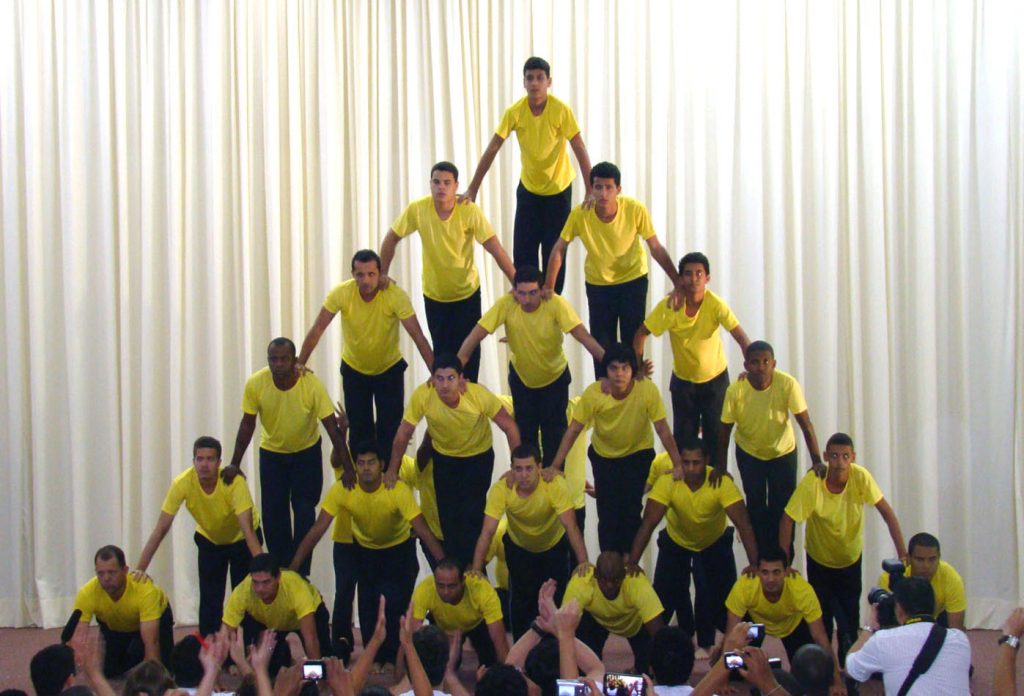
GUEST POST from David Burkus
Work is teamwork. And it’s no secret that some teams truly are greater than others.
A recent meta-analysis combined research conducted on over 200,000 teams in a variety of industries in order to answer that question. Across 274 dimensions of performance and over half a million individual team members, the researchers found that, in most fields, performance differences of teams followed a power-law—with a small number of high-performing teams achieving most of the results. In other others, high performing teams didn’t just perform a little better, they performed up to ten times better than normal teams.
With results like that, it’s worth looking at what makes a team great. Fortunately, there are a few elements of team culture that are found consistently in consistently great teams.
In this article, we’ll outline six building blocks that make a great team.
1. Clarity
The first building block of a great team is clarity. Teams need to be clear on what’s expected of them, what tasks they’re assigned—what tasks others are assigned—and how all of that fits together. Clarity is key to getting anything done. Without clarity, the ambiguity of assignments can make it feel as if others aren’t pulling their weight. One teammate will be working diligently on a project not knowing that a different teammate is waiting on her to complete a different task. But it’s not just clarity of tasks that makes a team great; it’s also clarity of people. How well teammates know the different work styles, personality differences, and strengths and weaknesses of a team can dramatically affect how well they collaborate. And that affects how well they perform.
2. Communication
The second building block of a great team is communication. Great teams have a synergy, where the eventual performance is greater than the sum of what the individuals could have done on their own. Achieving that synergy requires communication. Teammates need to be aware of what others are working on, and they need to be able to call for help (or offer) help easily. But surprisingly, this doesn’t mean that great teams are in constant communication all of the time. When it comes to knowledge work teams, it turns out that great teams communicate in bursts—spending long periods of time working uninterrupted and then short bursts of communication to solve problems and keep everyone in sync. They’re not in constant communication—because if they were they wouldn’t be able to focus on the deep work that really creates value on the team.
3. Diversity
The third building block of a great team is diversity. Diversity on a team matters because teams are often tasked with solving problems on their own—and the greater the differences in perspectives and experience, the greater the possible solutions will be generated. This “intellectual” diversity is what powers great teams. Mediocre teams may have surface level diversity—diversity in racial, ethnic, or gender characteristics—but their experiences, preferences, strengths, and weaknesses are more similar than they are different. Because of this, great teams often don’t stay together for long (because they would start thinking alike more often), or they find ways to continuously refresh the diversity of experiences and ideas on their team to keep it diverse—and hence keep it great.
4. Empathy
The fourth building block of a great team is empathy. Empathy goes alongside diversity and is really what unlocks the potential inside of a team’s diversity. Empathy here refers to how well team members understand and accept each other’s differences. Empathy on a team matters because diversity brings friction. When ideas differ, those ideas will fight for dominance. But empathy keeps the level of respect on the team high and ensures that teams are fighting to find the dominant idea and not just fighting their own personal battles or for personal dominance. Empathy teaches us how to harness idea friction into something truly powerful—and ensures that even those whose ideas don’t win out are committed to the team and the final decisions that are made.
5. Trust
The fifth building block of a great team is trust. Trust appears on great teams in two different but equally important ways. The first is task-based or cognition-based trust, which refers to how much the team trusts the knowledge, skills, abilities, and productivity of their teammates. Cognition-based trust matters because teammates need to know they’re not the only ones pulling the weight of the team. The second is person-based or affect-based trust, which refers to how much the team members genuinely likes their teammates and trust that they could be vulnerable in front of them. This matters because, on a team, all learning comes from vulnerability—the vulnerability to share new ideas or to admit mistakes and hence draw lessons from them. Both types of trust matter when building a great team.
6. Purpose
The final building block of a great team is purpose. And purpose here doesn’t mean how well the team memorized the company mission statement. Instead, it’s how well they’re internalized it. Purpose on a team refers to how well the team believes their work matters because it makes a meaningful contribution to the mission (good) and serves other people in a positive way (great). This purpose becomes a superordinate goal that has been shown in research to bond teams together better and faster than just about any other building block—and they build the other blocks faster as well. When teams have a great understanding of a great purpose—they almost can’t help but become great.
For that reason, purpose is often the best place to start when trying to take a normal team and make it great. Purpose provides the motivation for the team to work on the other building blocks and it reinforces the importance of continuing to work on them. Purpose is the foundation to build the team into one where everyone can do their best work ever.
Image credit: Wikimedia Commons
Originally published at https://davidburkus.com on February 20, 2023.
![]() Sign up here to join 17,000+ leaders getting Human-Centered Change & Innovation Weekly delivered to their inbox every week.
Sign up here to join 17,000+ leaders getting Human-Centered Change & Innovation Weekly delivered to their inbox every week.



